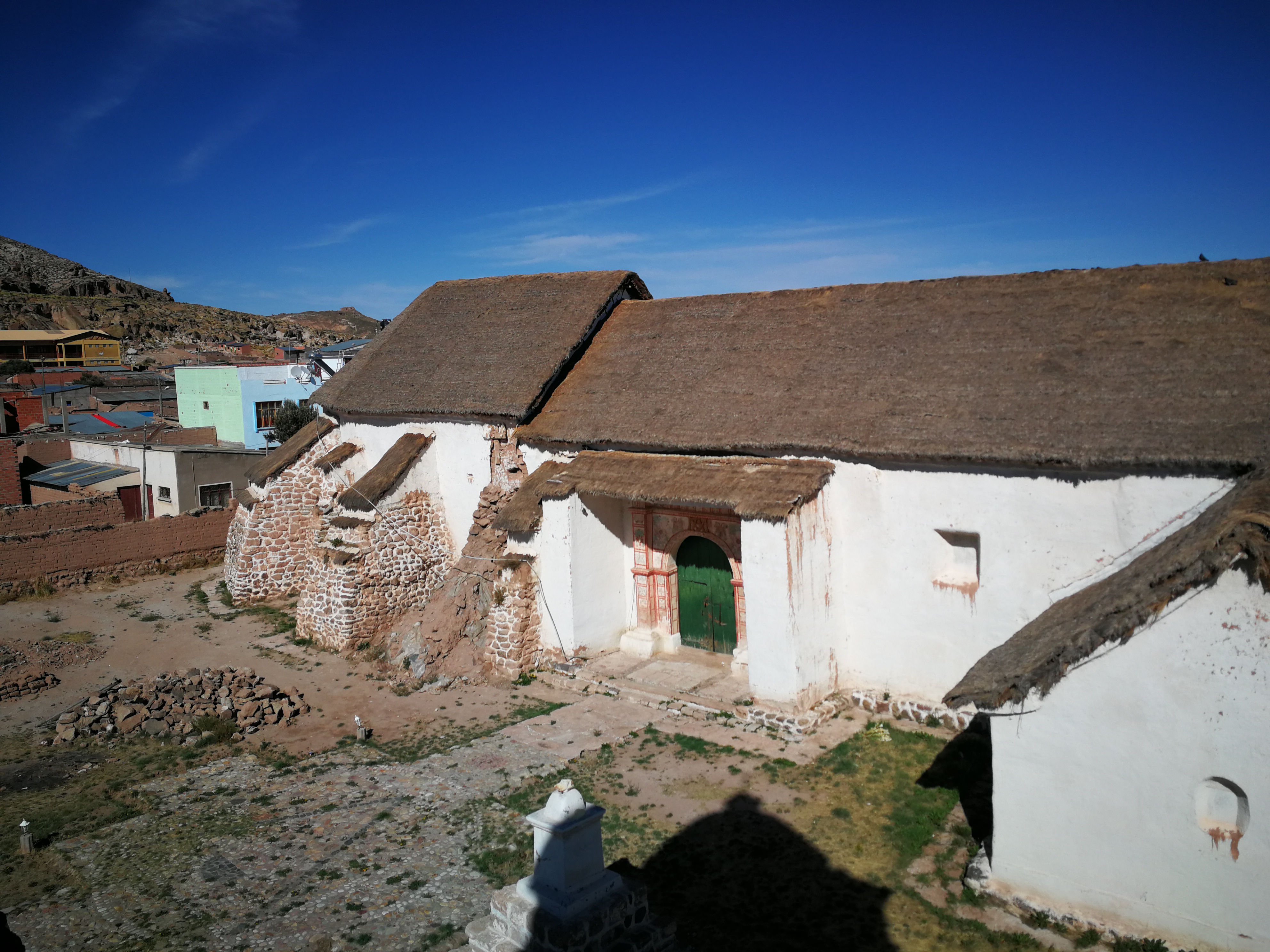Relación y contraste de lo ibérico en la iglesia Santiago de Curahuara de Carangas en Oruro (Bolivia)
DOI:
https://doi.org/10.18861/ania.2022.12.2.3301Palabras clave:
iglesia de Curahuara de Carangas, pervivencias ibéricas, postrimerías, arquitectura de la conversión, urbanismo, mensaje evangelizador, diseño en Bolivia, comunicación religiosa, altiplano boliviano, coloniaResumen
En este artículo se hablará de los contrastes y de las pervivencias con lo Ibérico en la iglesia Santiago de Curahuara de Carangas en Oruro (Bolivia), teniendo en cuenta que Ibérica fue nuestra colonización y que, como dice Marina Waisman “… no puede dejar de considerarse aquí la particular situación de la cultura española que durante varios siglos había logrado reunir en una compleja unidad los modos expresivos del mundo árabe y el cristiano, y que conservó esa admirable capacidad de pasar sin fracturas de uno a otro universo cultural, de uno a otro lenguaje artístico, hasta poco tiempo después del encuentro de las tierras americanas” (Waisman, 1993, p.90).
Para ello se realiza la investigación histórica del templo, el análisis urbano, el análisis de la arquitectura, de sus referentes y de las cualidades arquitectónicas interiores para terminar con las conclusiones, donde se enumeran las relaciones o pervivencias y los contrastes.
Descargas
Citas
Claros, E. (2012), Santiago de Curahuara de Carangas. Colección de manuscritos históricos (1829-1917). Anuario de la Academia Boliviana de Historia Eclesiástica. N° 18, 11-45.
Matas Musso, J. (2011). Pervivencias Ibéricas en el camino La Paz – Carangas, Universidad Católica Boliviana.
Mesa, J. y Gisbert T. (1997), Holguín y la Pintura Virreinal en Bolivia, Editorial Juventud.
Nicolini, A. (1997). La relación de la iglesia con el espacio urbano hispanoamericano siglos XVI y XVII, Universidad Nacional de Tucumán
Waisman, M. (1993) El interior de la Historia. Escala.
Artigas, J. (2003), Arquitectura a cielo abierto como una invariante continental. Jaime y Salcido Editor.
Chueca Goitia, F. (1947), Invariantes castizos de la arquitectura española. Editorial Dossat. Madrid.
Jemio, J. C., Montero, R. y Saravia, R. (1990). Informe proyecto: misión Oruro y Potosí- Catalogación del Patrimonio Histórico. I.B.C., La Paz, Bolivia.
Gisbert, T. (1994), Iconografía y mitos indígenas en el arte, Editorial Gisbert
Mesa, J. de y Gisbert, T. (1997) Arquitectura Andina, Editorial Don Bosco.
Mesa, J. de y Gisbert, T. (1985). Pintura Mural en Bolivia (S. XVI al XIX). Editorial Offset Color.
Mesa, J. de y Gisbert, T. (2002). Monumentos de Bolivia. Editorial Gisbert.
Romero, J.L. (1976). Latinoamérica, las ciudades y las ideas. Ed. Siglo XXI.
Salcedo, J. (1990). El modelo urbano aplicado a la América Española. Su génesis y desarrollo teórico práctico. En: Estudios sobre urbanismo iberoamericano. Junta de Andalucía.

Publicado
Cómo citar
Número
Sección
Licencia
Derechos de autor 2022 Josefina Leonor Matas Musso

Esta obra está bajo una licencia internacional Creative Commons Atribución 4.0.
El contenido de los artículos publicados es responsabilidad exclusiva de sus autores y no reflejan necesariamente las opiniones del Comité Editorial, ni de los evaluadores.
La revista Anales de Investigación en Arquitectura preserva los derechos de los autores, que son adoptados por Comité Editorial para su publicación. Los autores declaran que el trabajo presentado es inédito y no ha sido publicado en una revista científica o en una monografía.
La revista Anales de Investigación en Arquitectura proporciona un acceso abierto a sus contenidos, basados en el principio de la licencia internacional Creative Commons Reconocimiento 4.0 International License, que ofrece al público un acceso libre a las investigaciones para ayudar a un mayor intercambio global del conocimiento.

